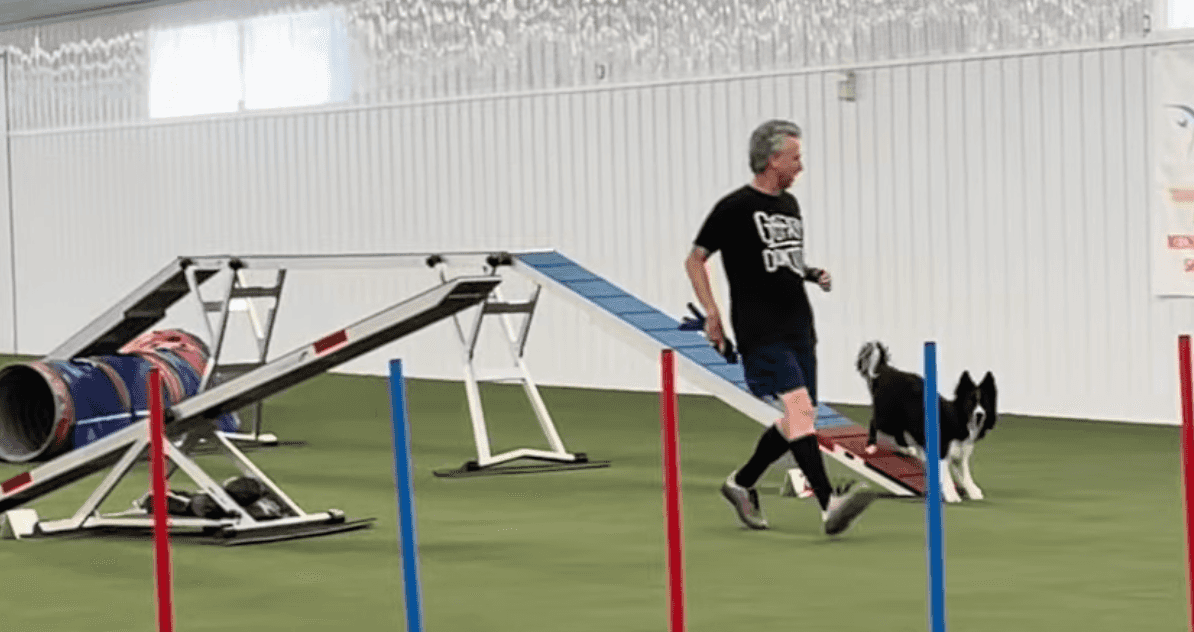Taking Advantage of Not For Competition (NFC) and For Exhibition Only (FEO) - Video
05 Sep 2023
I’ve put down some notes about the Not For Competition (NFC) and For Exhibition Only (FEO) options at agility trials and how I’ve used them. Some organizations use one term and others the other so I’ll use them both in this post. I hope you find these notes useful.
Always check the rules and the premium to make sure that the trial you are attending offers NFC or FEO and in which classes.
Most dog agility organizations/trials allow you to run your dog in NFC or FEO. You declare as you enter the ring that you are running NFC/FEO - so you can delay making the decision until just before any allowed run. Once you do that you can’t earn a qualifying score in that run.
You don’t have to follow the course at all and can repeat any obstacle any number of times during your time in the ring (typically standard course time or 60 seconds). Though it is nice to start on the “official” first jump so the timer doesn’t have to manually start the timer.
Uses:
- start line practice.
- practice attention and focus on you.
- running/stopped contact behaviors
- weave pole entries/exits
- running the course skipping obstacles for which your dog isn’t ready. (e.g. contacts, weave poles, etc.)
In AKC trials clubs can offer FEO in Time to Beat, FAST, and ISC classes. You can bring a non-squeaky toy into the ring and use it to reward your dog. The toy cannot be thrown or leave your hand. No treats can be used. Here are the AKC judge’s guidelines for FEO.
USDAA allows FEO in all classes at local events: “Non-audible toys are allowed but must be used in a manner that does not distract other dogs running in adjacent rings”. Here is official announcement.
AFAIK, UKI has the most lenient rules for NFC. When allowed in a class you can bring a helper into the ring, use props on obstacles, and throw your non-squeaky toy. Depending on the club/trial, treats may be allowed in a special area outside of the ring. The NFC rules are discussed on page 36 of the 2022 UKI rules.
My thoughts:
- When working with my experienced dogs I hide the toy in my pocket before I take my dog out of his crate so my dog doesn’t see it until I pull it out in the ring as an unexpected reward. I think the reward has more impact when it is unexpected in a trial situation.
- Reward your dog. I see folks bring a toy in and have their dog work through issues and not reward their dog at all, or only when leaving (yes, you might want to delay the reward until outside of the ring for some training scenarios). But, IMHO, if I’m using FEO/NFC I’m doing it specifically to reward my dog for doing well multiple times within the ring.
- Plan and walk your training sequence before you go into the ring. You don’t want to waste your time in the ring trying to figure out what to do.
- If you are using FEO/NFC to work on a specific skill, then plan your sequence to work on that skill. For example, if you are working on weave pole entries, then plan a sequence that has the approach angles/speed you need to work on. If you are working on contacts, then plan a sequence that has multiple safe approaches to the contact(s) of interest.
- Don’t abuse the allowed time, when the timer signals time is up, immediately leave the ring.
- Similarly, you don’t have to use the entire time. If you are working on a specific skill and your dog is doing well, then you can leave the ring early.
Here’s a video of me using FEO at a recent AKC ISC run to work on Snap!‘s stopped contacts.
Other Resources
As I was finishing this article I found some other very helpful articles:
- Esteban Fernandezlopez from Bad Dog Agility wrote Thinking About Using FNG or FEO at Your Next AKC Agility Trial?
- Tara Baggerman and Jared Davis wrote a detailed blog post that you should read Maximizing The UKI NFC Option
Conclusion
FEO/NFC are a great way to introduce your dog to the trial environment and to practice your skills. I hope you find these notes useful. If you have any questions or comments, please let me know.
If you enjoyed this article won't you please:  Thanks!
Thanks!
Related Tags
Related Articles:
- Use NFC/Mulligans for New Environments/Equipment in Competition - Video
- NFC/FEO for Start Line Training and Snazzy Photos
- Sheri Boone MC Jumpers Competition Course - Video
- AKC Premier Standard Courses by Tim Pinneri and Arlyn Sigeti - Video
- Make the Second Obstacle Free - UKI Invitational Finals - Video
- Spark's UKI Invitational Experience - Video
